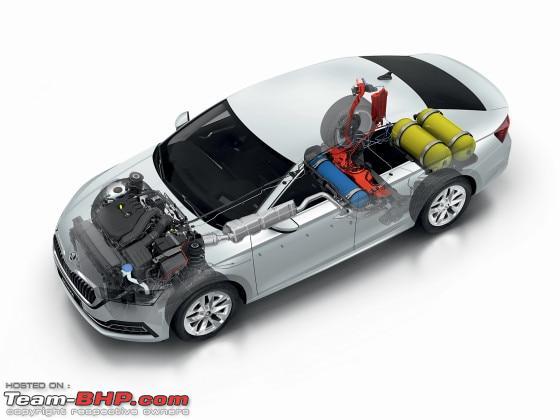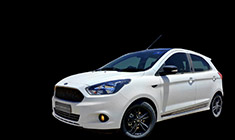News
The future of CNG in India
Every time the petrol prices soared, interest started building up but, people still went the diesel way.
Schneller recently shared this with other BHPians.
We can all agree that the future is electric and, I'm sure you all will also agree that it will need a lot of time to get the requisite infrastructure. Let's not forget that currently car penetration in India is around 30 cars per 1000 people. The majority of these 30 people are customers buying small hatchbacks and cheap cars. For them, EVs will remain unaffordable for the next 5-7 years. (Considering this segment, not the individuals, as they might grow financially and be able to afford EVs).
CNG has been around for a very very long time and it never really caught up well in private use. Every time the petrol prices soared, interest started building up but, people still went the diesel way. Today, let's take a look at why that happened and what is happening now.
Here's why people with higher running chose diesel cars:
- Long range on a full tank (600-1000 KMs) compared to CNG's paltry 200-300 KMs.
- Diesel is available in every nook and cranny of the country. You can struggle to find premium petrol on highways but, not premium diesel. CNG is scarce in supply and has few stations barring some big cities.
- Long filling queues at CNG stations. Compared to fuel pumps, there are very few CNG pumps. This leads to huge queues at filling stations and that usually means filling up CNG is anywhere from a 20 minute to a 40 minute affair. This is not the kind of time a normal person is ready to part with. This is usually the case in New Delhi. Filling up at odd times is easier.
- Availability of CNG powered cars - CNG powered cars are synonymous with cabbies or hugely budget-conscious people. In line with this thinking, the cars available with factory fitted CNG kits are mostly on the cheaper spectrum and that too on the lower variants. Very few people are up for the headache of getting a CNG retrofit done.
- Misinformation about CNG - there is a lot of misinformation about CNG vehicles. "They don't last as long as liquid fuel cars", "They are very dangerous to be in", "CNG cars don't drive well, they are slow".
- Social stigma some people feel while installing CNG kits.
- Boot space
Now, we know that the Government is focused on converting India to a gas-based economy, pushing for an increase of CNG stations to 10,000 countrywide by 2030 and, at the same time, it is focused on electrification too. Now let's see the problems:
Here are the advantages of EVs above CNG cars:
- Paltry running costs - Although CNG cars have insanely low running costs, EVs are even lower. Add to that EVs motors don't need maintenance too unlike ICE engines. Running costs are further lowered if you have a Solar setup at home. You can basically ride for free.
- Cleaner - No tailpipe emissions!
- Various subsidies + incentives available
- Boot Space
Here are the advantages of CNG cars over EV's
- Faster refilling - Without a queue, it takes 3-6 minutes to fill CNG in a car, this increases the range by 200-300 KMs. In EV's you need to wait 40-60 minutes even with 50 KW chargers. And, if you see the general chargers being installed aren't the 50KW kind. They are 15KW chargers.
- Cheaper to buy - EV's are expensive, Period. Also, with the Oil ministry's recommendation to decrease GST on CNG cars, if the government decides to implement it, CNG cars will see a huge price advantage.
- Increasing availability of CNG - Just 2-3 Years back, you would curse the car for having low boot space on a Highway run from Delhi to Amritsar / Delhi to Ludhiana / Delhi to Shimla. Now, you would be happy. You can go almost anywhere in Punjab from Delhi with more than 90% way on CNG (100% for major cities).
- Bi-Fuel - No CNG? No problem, run on petrol instead till you find it. No electricity for your EV? tough luck. Interestingly, TATA has installed EV stations on NH1 Dhabas which have dedicated diesel generators attached to power your car in case of power failures (which are frequent). This shows our electric infrastructure. In our current scenario and even 10 years later, I wouldn't buy an EV as the primary car but, a CNG car? I could. The reason is simple, where we face frequent electricity cuts outside metro cities, how can you comfortably run an EV. Imagine you have to run a generator overnight (which happens) and charge you EV using that.
Going Forward
Here is how I feel the future would be. Maruti has said it may release pure CNG vehicles, NOT HAPPENING! What I feel should be the future going ahead is making cars on CNG platforms, not retrofitting kits. In Europe, check out the CNG vehicles, they have a proper boot and no visible CNG tanks. It's all installed where the spare wheel well would've been + a little lower. Petrol tanks made smaller and the sizes CNG of tanks increased. The CNG filling capacity in even small cars is about 10-14 KGS (actual filling not tank size).
Europe's largest CNG market, whose kits we happily label as the best (Italy), has VAG CNG cars in 9/10 spots in their best selling list. VAG has a lot of good technology when it comes to CNG and is the market leader in Europe
A lot has been said about CNG not taking off in Europe and the increasing share of EVs. People give Norway as examples but, let's take it into perspective. India's best selling car is the Swift, priced at Rs. 5.5 Lakh. Norway's best selling car is Audi e-tron, priced at 43 lakh rupees. You can gauge for yourself if that model will work well in India. People with higher running on highways will anyway not prefer vehicles like the Nexon EV.
Now, here is how I feel the future for CNG vehicles will take shape in India. Brands should now focus on launching vehicles on dedicated CNG platforms like Skoda's G-Tec, VW's TGI, SEAT's CNG and Fiat's CNG models too (Mercedes used to have Gas Drive). They have cylinders beneath the boot and have large boot space available + higher CNG capacity. For eg, the new Octavia G-Tec comes with a 1.5 TSI Engine with 3 concealed CNG tanks which can fill up to 17.33 KG of CNG. The Petrol tank is just 11 Litres in size. But, the engine is tuned for efficiency of 27-28 KM/KG. Imagine that FE on a Octavia. This is how it looks.

I would love to see CNG on the likes of Renault Kiger or Nissan Magnite. It was after-all Renault's current CEO who was the head of CNG (Development and everything) at VW. What I expect is companies like Maruti (also Toyota) to take the first step in developing cars like these, they already have the CNG technology and are betting big on CNG. Just need to work on the design a bit. Also, VW showed interest in CNG segment a few years back. If CNG picks up, VW might bring in their CNG models too. Also, CNG needs ATs (not AMTs).
For anyone having a running of above 70 KMs a day, it makes sense to buy a CNG car. My current running due to WFH/SFH is about 40-50 KMs a day. If it goes up, I might have to buy a dedicated CNG car with the current fuel costs.
The reason for writing this is to provide some insight into CNG as a lot of people have written about CNG as a fuel and thinking that the future will jump straight to electric. Increasing pollution control norms will gradually phase out diesels in small cars altogether very soon and CNG will be the choice. Even now, compared to diesel cars, CNG saves about 50%+ on running costs per KM for same model cars. The only problem I face is, the CNG variants of vehicles are increasingly towards the likes of cabbies. They are too bare-bones. I wish manufacturers introduce cars with CNG on higher variants or better models. If I had to buy a CNG car today, I would go with the Grand i10 Nios Sportz CNG. It is the only CNG car to offer Apple CarPlay, alloy wheels and Automatic climate control.
Thanks to Schneller once again! Check out BHPian comments for more insights & information.



















